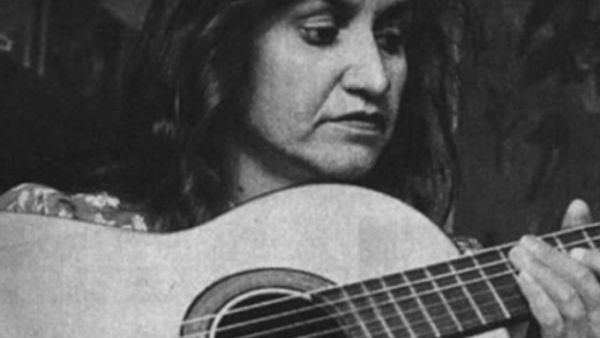

Violeta Parra Violeta del Carmen Parra Sandoval was born into a musical family in 1917, in Chile’s Valle Central. She was the third of eight siblings, among them Nicanor Parra, the university physicist, national poet, winner of Chile’s Premio Nacional de Literatura y Miguel de Cervantes, and her lifelong confidant. From a young age Parra learned and sang boleros, Peruvian valses, Mexican corridos, and Chilean cuecas. She sought the mentorship of traditional artists to develop a singular voice that would gain her recognition across Latin America. Her reception in Paris was both musical and artistic as a painter and textile artist (she exhibited in The Louvre). She also was the doyen of a folk performance center she founded outside Santiago de Chile. Parra’s life entailed a wide-ranging struggle against the poverty, paternalism, and sharp class distinctions of Chilean society, and the contradictory passions and sadness of her family and love relationships. Originally issued by RCA in 1966, Las últimas composiciones de Violeta Parra is a remastered, vinyl-only release of her final and arguably most famous recording. Despite her considerable achievements, she expressed deep disappointment that her mission did not garner the material support she believed it warranted both at home and abroad. Shortly after this recording’s issue, Parra committed suicide in February 1967. Broader recognition would come after her passing, especially as her spirit animated the Nueva Canción (New Song) movement of Allende years (1970–1973), carrying over into resistance to the Pinochet dictatorship (1973–1990) and beyond. The biopic Violeta Went to Heaven (Violeta se fue a los cielos, 2011), based on the biography by her son, Ángel Parra, also a folk singer, portrays Violeta as an artistic iconoclast, in what may be read as her artistic manifesto. "Write as you like, use the rhythms that come out, try different instruments, sit at the piano, destroy the metric, shout instead of singing, blow your guitar and ring the horn. Hate mathematics, and love eddies. Creation is a bird without a flight plan that will never fly in a straight line."
The recording serves up Parra’s final works, including “Run Run se fue pa’l norte” (a bittersweet reflection on her lover’s departure to take up life with a younger woman in Bolivia) and “Maldigo del alto cielo”: I curse the statues “Rin del angelito” (Angel’s Rhyme) reads as a lamentation on the early death of her daughter Rosita Clara: When one dies in the flesh Parra’s best-known song is “Gracias a la vida” (Thanks to Life), made famous by Mercedes Sosa and Joan Baez, and covered by Yo-Yo Ma, Omara Portuondo, and Shakira among countless others. The song often has been interpreted as a lyrical suicide note. As Parra told Chilean author Sabine Drysdale, “I had nothing. I gave everything. I wanted to give, but I found no one who would receive what I had to give.” In Parra’s last letter to her brother Nicanor she wrote, “I do not take my own life for love. I do it out of the pride that washes away the mediocre.” Parra was unyielding until the end, a testament of her own choosing.
Thanks to life, which has given me so much
Search RootsWorld
|